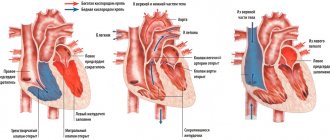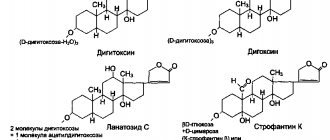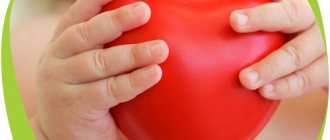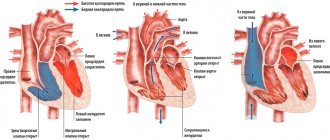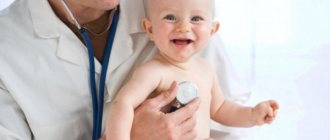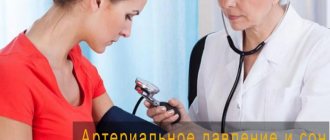- Home /
- Branches /
- Pediatrics /
- Diagnosis of cardiovascular diseases
10/14/2021 The article was checked by pediatrician Smirnova E.F. , is for general informational purposes only and does not replace specialist advice.
For recommendations on diagnosis and treatment, consultation with a doctor is necessary. Problems in the cardiovascular system are known to be one of the most common causes of death worldwide. However, many “adult” diseases begin in childhood, so doctors at the pediatric department of the Yauza Clinical Hospital pay special attention to cardiac examinations of young patients.
In our work, we use the most modern diagnostic methods for cardiovascular diseases, trying to cause as little discomfort as possible to children. Taking into account the functional characteristics of the children's cardiovascular system, doctors at the pediatric department of the Yauza Clinical Hospital develop individual treatment programs.
Features of the cardiovascular system of children
The child’s cardiovascular system has a number of anatomical features that determine the characteristics of its functioning. So, when compared with the total body weight, the heart of a newborn is much larger than the heart of an adult. At the same time, the organ grows quite intensively, and by the age of 3 years its weight increases three times compared to a newborn, and by 6 years - 11 times.
Due to the high intensity of metabolism, as well as due to the peculiarities of regulation of the work of the heart muscle, the heart rate in children is higher than in adults: in newborns, the heart rate reaches 140-160 beats per minute, by the first year it decreases to 140, by 5 By the age of 15, the heart rate drops to 100 beats per minute, and by the age of 15 it reaches a normal level (approximately 80 beats per minute).
Also, in childhood, the heart has some anatomical features that create the preconditions for “wrong” blood flow. This so-called foramen ovale is an opening through which the right and left atria can communicate. Over time, it should close in the child, and doctors will certainly monitor this process.
To wait or not to delay?
A quarter of the defects are critical, for which surgery must be done immediately after birth. You can wait with other types of them. And there are also defects (for example, small defects of the interventricular septum of the heart) that often close on their own over time.
Previously, such children were diagnosed with a huge delay and often when it was too late to do anything. But with the advent of high-quality ultrasound diagnostics, many congenital heart defects are detected even at the stage of intrauterine development. And, although a definitive diagnosis can only be made at birth, such a diagnosis is extremely important.
Sudden death - during physical education. Why do children die in class? More details
The most common cardiovascular diseases in children
Congenital heart defects (CHD) are defects in the structure of the heart and large vessels that interfere with their normal functioning. CHD is most often detected by ultrasound, which is performed on a woman during pregnancy. Children with congenital heart disease usually get tired faster, are susceptible to frequent respiratory diseases, and may lag behind their peers in development. Treatment of congenital heart disease in most cases involves surgery.
Arterial hypertension - despite the fact that this disease is usually talked about in relation to adult patients, it is also common among children: approximately 20% of schoolchildren suffer from high blood pressure. Children of prepubertal and pubertal age are most prone to increased blood pressure. The cause of increased pressure may be kidney pathology, bronchopulmonary dysplasia, or narrowing of the aorta. Increased body weight, stress, and heredity contribute to the development of hypertension. The child may not feel any increased blood pressure, but may complain of headaches, pain in the heart, memory impairment, and increased fatigue. At the initial stage, treatment of cardiovascular diseases is carried out using non-drug methods (daily regimen); if this does not produce results, then drugs that reduce blood pressure are used.
Arterial hypotension is a decrease in pressure that can accompany various diseases (including diabetes mellitus, kidney pathology, cardiac diseases, hypothyroidism and others) or be a consequence of the developmental characteristics of the child - children with insufficient body weight, hypochondriacs, children who do not comply with daily routine, etc. Low blood pressure is manifested by headache, weakness, decreased performance, memory loss, and fainting. Treatment of hypotension in the first stages is carried out using non-drug methods by regulating the daily routine, massage, physical education, and hardening. Drug treatment consists of prescribing drugs that increase blood pressure, tonics, vitamins, etc.
Rheumatic fever is a disease that is the main cause of acquired heart defects in children. The disease can occur as a complication after a sore throat; it is autoimmune in nature, with the heart tissue suffering the most. The danger of rheumatic fever is that formed heart defects may not be recognized in time, they progress, and at the age of 20–30 years they manifest themselves in the form of heart failure. To avoid the development of complications, it is necessary to prevent sore throats, as well as monitor the child with a cardiologist for a year after the illness.
Tachycardia is an increase in heart rate associated with a violation of the mechanisms that regulate the functioning of the heart. Tachycardia usually manifests itself as increased breathing, weakness, shortness of breath, dizziness, and the child may faint. Treatment, depending on the type of tachycardia, can be medicinal or surgical.
Arrhythmia is a disturbance in the rhythm of the heart.
As a rule, we talk about this disease in relation to older people, however, in particular, during the period of hormonal changes, children can also suffer from arrhythmia. Also, factors causing arrhythmia may be heredity, malformations of the heart muscle, previous infections, etc. Typically, children describe their feelings from arrhythmia as severe fatigue, discomfort in the heart, dizziness, darkening of the eyes, and weakness. Such children refuse to play and try to avoid physical activity. Often, a child’s condition can be improved by adjusting diet and sleep patterns and reasonable physical activity. In some cases, medications are required.
Nature of pain and pathology
It is important to consider in more detail the main causes of heart pain, which are associated with pathological processes in the body. The strength and severity of sensations, the time of its appearance and the provoking factor play an important role in diagnosis.
Stitching pain usually occurs in the following cases:
- pressure changes due to dystonia;
- neurosis;
- penetration of air into the pleural cavity of the left lung;
- pericarditis;
- rachiocampsis;
- heart disease, myocardial dystrophy, coronary blood flow disturbance.
Pressing pain in the left chest often accompanies severe abnormalities and may be a sign of:
- pericarditis;
- myocardial ischemia;
- aneurysms;
- congenital abnormalities in the structure of valves and coronary vessels.
It is important to understand that children who complain of heart pain are not always just trying to attract the attention of their parents. It cannot be ruled out that the child is telling the truth. In this case, it is best to play it safe and undergo a full examination.
Diagnosis and treatment of cardiovascular diseases in children at the Yauza Clinical Hospital
Doctors of the pediatric department of the Yauza Clinical Hospital have all the capabilities for a thorough and comprehensive diagnosis of cardiovascular diseases in children. In particular, our own laboratory performs the necessary tests; it is possible to do an ultrasound of the cardiovascular system, an ECG, and regularly monitor blood sugar and cholesterol levels.
For treatment, doctors choose the most gentle methods, paying great attention to the prevention of the development of cardiac diseases and non-drug treatment methods. If necessary, doctors consult with colleagues from other specialties to choose the best treatment option.
Steep route
According to accepted standards, the expectant mother should undergo a second ultrasound screening at 16–20 weeks of pregnancy. From this time on, it is already possible to identify congenital heart defects and other developmental defects in the fetus. If something happens, completing this important study will help develop the optimal route for the treatment of a tiny patient.
If any suspicions arise, the pregnant woman will be sent to a specialized hospital, where there is not only precision equipment, but also highly qualified doctors. A council of specialists will decide what to do next: whether to recommend that the woman terminate the pregnancy (after all, part of the congenital heart disease, unfortunately, is incompatible with life or is accompanied by severe mental retardation) or wait for childbirth and plan an operation (emergency or delayed) for the baby.
Those defects that could not be detected at the second screening are most often detected at the third (at 30–32 weeks). By the way, the method of delivery is also chosen by specialists.
Article on the topic
Heart disease is not a death sentence. How children with cardiac pathologies are now saved
Is the noise dangerous?
However, the accuracy of intrauterine diagnostics is only 50%. After all, some complex defects are almost impossible to identify before birth.
Often, in appearance, babies with congenital heart disease cannot be distinguished from healthy children - many of them are plump and active. It is also impossible to judge the presence or absence of a disease by heart murmurs. Up to 50% of complex defects do not make any noise.
To screen for the disease, pediatric cardiologists today use special devices - pulse oximeters, which make it possible to assess the degree of oxygen saturation in the blood and see heart rhythms.
If suspicions remain that the child has heart problems, parents need to perform an echocardiogram (ultrasound of the heart) as early as possible (preferably in the first week of the baby’s life). And in order to sleep peacefully, at the same time, also do an ultrasound of the abdominal cavity and neurosonography (ultrasound of the brain).
If, neither during pregnancy nor after birth, the child has no heart problems and no complaints subsequently arise, then standard examinations by a cardiologist and an ECG (before enrollment in kindergarten and school) are sufficient.
85% success
Only a small proportion of children with congenital heart disease can be operated on endovascularly (when the surgeon inserts instruments through a vessel, without cutting the chest). In other cases, surgery is performed on an open heart using artificial circulation. This surgery is difficult, but rewarding. After all, 85% of children with congenital heart disease who were operated on in a timely manner successfully survive the 18-year mark and enter adulthood. They get a profession, play sports, start families and have children. While without surgery they would have no chance of life.
Unfortunately, there are defects for which radical, that is, complete, correction is impossible, and such patients require not one, but several complex operations. But even if in the end the child does not become completely healthy, nevertheless, such treatment will help save his life and improve its quality.
Heart surgeries are performed in large cardiology centers and are classified as high-tech medical care. Despite this, they are carried out free of charge as part of the state guarantee program, or, as people say, according to quotas. But if the child and his parents are citizens of another state, then the treatment will have to be paid either at their own expense or with the help of charitable foundations.
